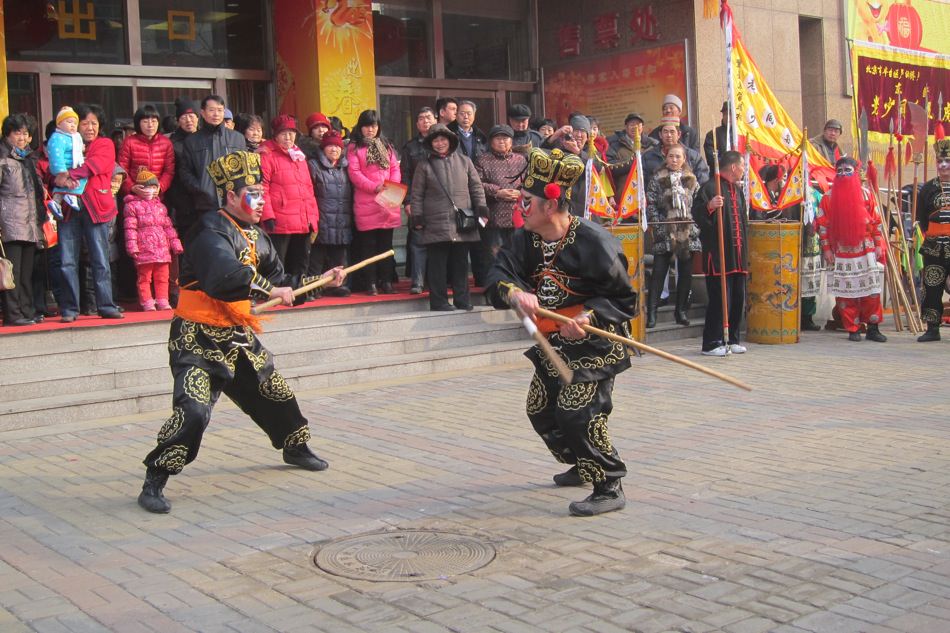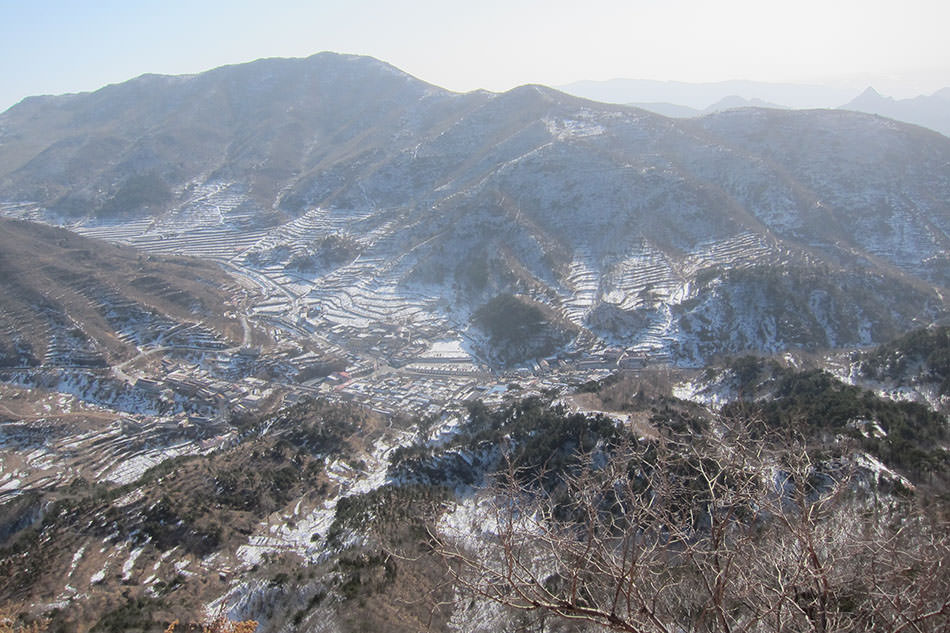The Lunar New Year began last week as it always does, with a new moon. The empty sky seemed to empty Beijing of up to half its residents—authorities estimate that an incredible nine million people left the city, which usually has a population of eighteen to twenty million. This made it all the more enjoyable for those who stuck around, who were rewarded with a record number of temple fairs and their performers: scores of folk artists who gave daily performances of traditional arts, acrobatics, and martial arts—the sort of local cultural scene that this town of restaurants and staid museums rarely offers.
The exodus from the Chinese capital happens every year as migrant workers go home for the holidays, but the pace seems to be picking up. Better infrastructure and more wealth allows most migrants a chance to spend a week or two at home, while even middle-class Chinese can now afford to head off to warm beaches in Southeast Asia. The roads that the rich usually clog up with their fat German cars were wide open, the subways usually filled to bursting with the poor and middle-class were almost empty. Suddenly getting around this ever-expanding city wasn’t a chore; it was exhilarating. As for the city’s infamous pollution, northern China still burns a lot of coal so there were two tough days, but the lack of cars helped reduce the smog, probably accounting for several others that were brilliantly clear.
I rented a car for three days and zipped around town at breathtaking speed. I went up to Miaofengshan (the Mountain of the Mysterious Peak) to visit a friend who runs a Daoist temple there, accomplishing the two-and-a-half-hour drive in just ninety minutes.
Even the unending din of fireworks—a common reason for foreigners to get out of town—was more bearable this year. As part of new Chinese leader Xi Jinping’s drive to reduce corruption and waste, the government had announced that no public money should be spent on fireworks, and in Beijing, at least, the effect was immediate. New Year’s Eve—the opening night of the holiday, which fell on February 9—featured numerous displays, but most were over by 1 AM. The following evenings were fairly quiet.
Instead, attention seemed to be given to more substantive spectacles. When I lived in Beijing in the 1980s and 1990s, it was hard to find many of the traditions mentioned in books like Annual Customs and Festivals in Peking with Manchu Customs and Superstitions, a 1936 work by the great American sinologist Derk Bodde. Now, it’s almost impossible to miss them, from the Laba congee that temples offer (and that recently caused a near riot in one Chinese city) to the seasonal foods now for sale in stores like Beijing’s Daoxiangcun
Thanks to government support for “intangible cultural heritage,” dance, music, and martial arts performances have also increased dramatically and now could be seen on each of the first five days of the holiday. Performers—mostly working-class amateurs who have had to struggle to find even a place to practice—are given stipends to cover their transportation costs. Maybe more importantly, the shows offer them status in a society that has had little time for them or their centuries-old art forms.
Probably the best temple fair is held each year next to the China Bookstore at Liulichang, a street that features galleries and stores selling traditional fine art supplies, such as writing brushes, ink stones, and xuan rice paper. Called the Changdian Temple Fair, it featured many of the most famous performers of folk dance, singing, acrobatics, and martial arts. These groups originated as societies that performed in honor of gods on their feast days at temples, as well as to entertain the pilgrims who were visiting. Many still have a religious orientation but some are more secular, with their members participating for fun, exercise, and camaraderie.
One troupe I’ve particularly enjoyed over the years is Zhao Baoqi’s “Five Tigers Clear the Road” (五虎打路), which performed at the Changdian festival on February 11. Zhao is a key player in the revival of traditional folk arts in Beijing and his group is the last in Beijing that performs in a physically demanding style that centers on the story about a Song dynasty emperor who is attacked by bandits. In this video, we see two separate performances by four of his older disciples; the problem that Zhao’s and other groups face is prying young people away from the computer screen.
Two separate performances from the Tongxin Heyuan Five Tigers Clear the Road at the Changdian Temple Fair, February 11, 2013
Advertisement
Another troupe, the Qunying Tongle Small Carriage Society, performed the weekend before Chinese New Year. In the video seen below, the members are performing in front of a temple to Lord Guan, one of the main gods in the Taoist pantheon. The troupe tells the story of a young woman from the court—whose name is homophonous with a traditional deity—who ventures out of the palace in her carriage and encounters various adventures on her way to a temple. In this video, the members are prostrating themselves in front of a temple and at the end, two older members show off their acrobat-like flexibility.
Performers of the Qunying Tongle troupe paying respect to the temple of Lord Guan at the Sifang Bridge in Beijing, February 2, 2013
In recent years, these temple fairs have been supplemented by performances at government cultural centers or in public squares. One in the southwestern suburb of Fengtai on Wednesday featured the Weishan Yongchang Five Tigers Shaolin troupe.
A martial arts performance by the Weishan Yongchang Five Tigers Shaolin troupe in Fengtai
Not everyone is content with the management of these events. I spoke to a Daoist priest this week who said the government is planning to launch an investigation into the commercialization of places of worship. Too many local governments, he said, are trying to make money from Buddhist and Daoist temples or folk practices. “Religion is supposed to improve people’s moral and behavior, not add to the GDP,” he said.
That reminded me of a book I just started reading, The Lunar Tao: Meditations With the Seasons. Written by one of the foremost promoters of Daoism in the West, Deng Ming-Dao, it uses the moon year as a way to promote meditation through the traditional Chinese seasons. “We need Taoism that is daily life,” Deng writes. “The best way to find that is to return to the lunar calendar that has been embedded in the culture and shaped by centuries of spiritual and folk traditions”—something that seems to be happening in Chinese society right now, with authorities allowing more space for overt religious practice as well as for the broader folk beliefs that have given Chinese a sense of meaning and direction.
Slowly, the holiday is ending, the performances dwindling and the traffic building back up. Thursday was the fifth day of the New Year, the end of the core part of the holiday. Traditionally, the first days of the New Year are spent with family at home and all food is prepared beforehand—something one still sees in the rush to buy delicacies at stores specializing in traditional foods. But the fifth day is “broken” with trips and festivities—and a night of fireworks. For many office workers, that means the end of the festival and a resumption of work as early as this coming weekend.
Most migrants will only start straggling back next week, however, and a fair number won’t be back until the fifteenth day of the New Year—the full moon, which marks the official end of the festivities. This holiday is unfortunately translated as “Lantern Festival” but its Chinese name, yuanxiao, is far more evocative: Primal Night. This is when the night is lit by the moon, the days are milder, and the year begins anew.




